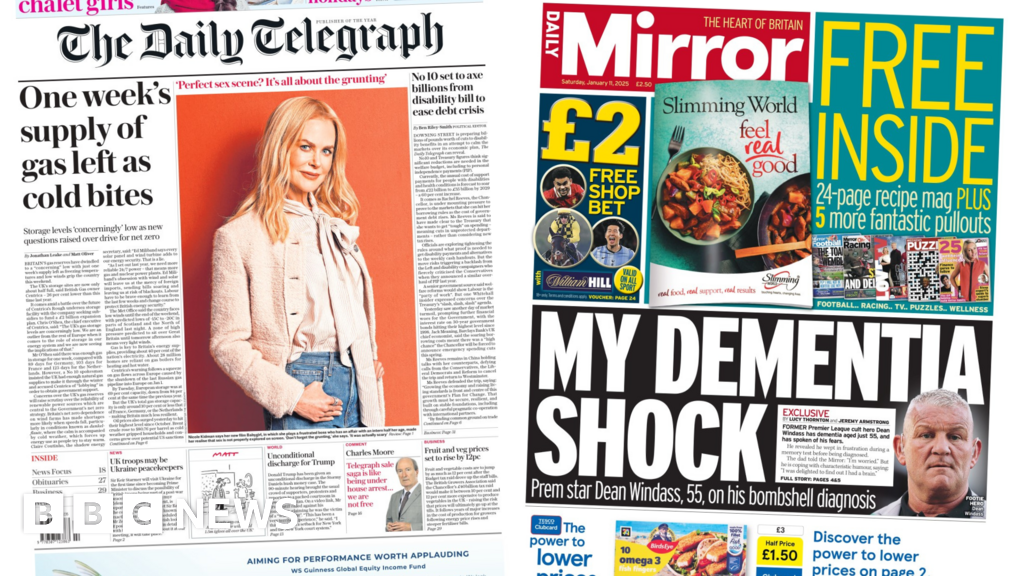26 minutes ago
By Sir John Curtice, Professor of politics at University of Strathclyde

 Getty Images
Getty Images
A trio of recent opinion polls have predicted Labour is on course to win a huge majority at the general election.
So are the Conservatives really on course for an election "wipeout"? Or should we be sceptical about poll findings?


Firstly, what are the old-fashioned type of polls telling us - those that typically interview between a 1,000-2,000 people in order to estimate the parties’ share of the vote across Britain as a whole?
No less than 16 companies have conducted at least one such poll during the seven days since Monday of last week.
In those polls, Labour are averaging 41% - which is three points down on where they were when Rishi Sunak called the election.
But they are still 20 points ahead of the Conservatives, who are now on 21% - also three points down on where they were at the beginning of the campaign.
According to these regular polls, the prime minister’s campaign has not had any success in reducing Labour’s lead.
The party that has gained ground is Reform UK.
Since Nigel Farage announced he was taking over as leader and running as a candidate, Reform's support has gone up by five points compared to the start of the campaign.
The Liberal Democrats have also edged up a bit – they are now running at 11% - up a point in the campaign. Meanwhile, the Greens are holding the 6% they started off with.
Of course the regular polls have not always been right. But two things stand out from these numbers.
Firstly, only 62% of people are saying they are going to vote for either the Conservatives or Labour.
That would be a record low since Labour first became the principal challengers to the Conservatives in 1922.
And secondly, the Tories have never previously been this low in the opinion polls – including, not least during a general election.
MRP 'megapolls'
But what about those polls that have predicted a large, indeed in some instances very large, Labour majority?
The three latest are from polling companies YouGov, Savanta, and More in Common and use a so-called multi-level regression and post stratification (MRP) model.
They typically interview a lot more voters, in some instances as many as 40,000.
Because they interview so many people, they can work out how those with different demographic characteristics - such as gender, age, and educational background – are likely to distribute their support between the parties.
Meanwhile, sources like the Census tell us how many people in each demographic group live in each constituency.
By combining these two sources of data, statisticians can estimate how many people are likely to vote for each of the parties in each constituency.
As a result, these MRP polls give us an idea of how the ups and downs in party support since the last elections vary across the country. Under our electoral system this variation can play a key role in determining how many seats each party will win.


All the recent MRP polls suggest the Conservatives could win fewer seats than they have done at any previous election. Their all-time low was 156 in 1906.
However, their estimates of exactly how many Conservative MPs will be returned has ranged widely - from as few as 53 to as many as 155.
So why are all the estimates so low. And why do they differ so much?
All these polls are reckoning that the Conservatives are losing support more heavily in constituencies they are trying to defend than they are in seats which are already in opposition hands.
If this happens on 4 July, the Conservatives will lose many more seats than they would if their support fell by more or less the same amount everywhere.
However, the MRP polls do not agree on how much more the Conservative vote is falling in the seats they currently hold.
For example, More in Common estimates that in constituencies where, in 2019, the Conservatives were 25 points or more ahead of a second placed Labour candidate, the Tory vote is currently down on average by 23 points.
In contrast, in seats in which Labour were first and the Conservatives second last time, they reckon Tory support is down by 12 points – 11 points less.
'Safer seats'
However, in their poll, which suggested the Conservatives might win as few as 53 seats, Savanta and Electoral Calculus estimate the difference between the two types of seats in the average fall in Conservative support is 21 points.
Their poll says Conservative support is down on average by as much as 33 points in their safer seats.
Nobody can be sure where the truth lies between these two estimates. Just how best to estimate the variation in the unprecedentedly sharp fall in Conservative support is the subject of debate within the polling community.
But there is good reason to believe that some such pattern will emerge.
On average, Conservative support is currently down 24 points on 2019 in the regular Britain-wide polls. However, the party won less than 24% of the vote in 2019 in as many as 100 seats – so, if the polls are at all right, Conservative support must be falling more heavily elsewhere.
Meanwhile, Reform UK’s predecessor, the Brexit Party, did not contest Conservative held seats in 2019. This time the party is standing in most Conservative held seats. This means its advance now, largely gained by winning over one in in four 2019 Tory voters, is strongest in such seats – largely at the Conservatives’ expense.
But just how much bigger is the fall in Tory support likely to be? Nobody can be sure. But the fate of many Tory MPs could well rest on what the answer proves to be.
Sir John Curtice is Professor of Politics, University of Strathclyde, and Senior Fellow, National Centre for Social Research and ‘The UK in a Changing Europe’. He is also co-host of the Trendy podcast.
 (1).png)
 6 months ago
21
6 months ago
21


















